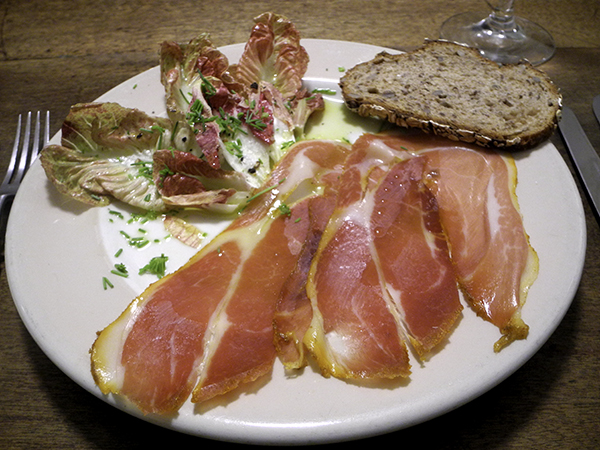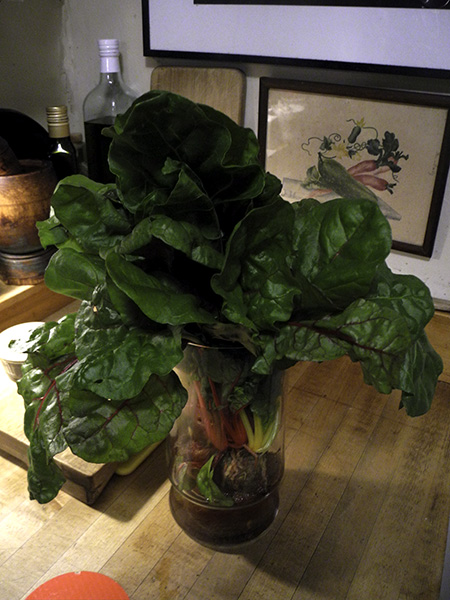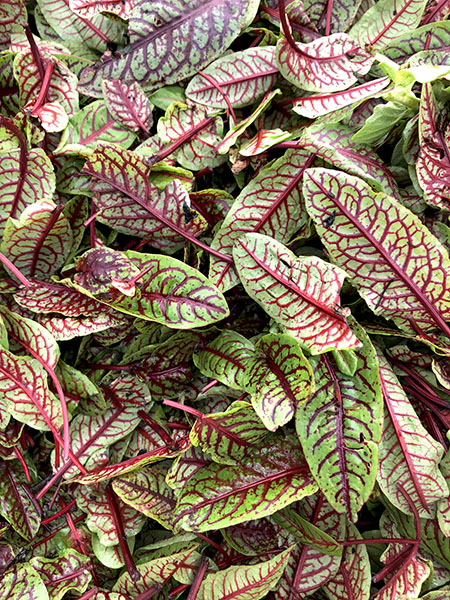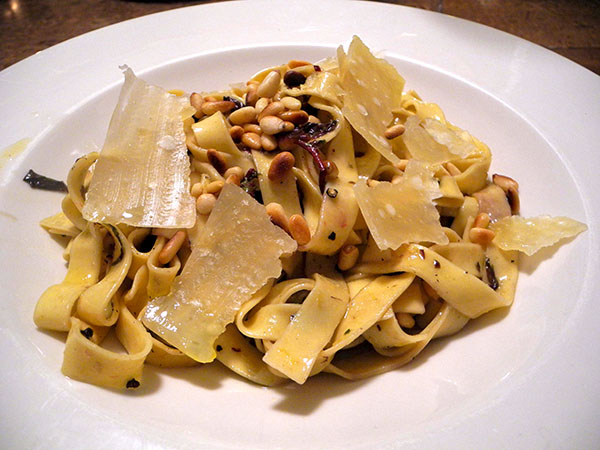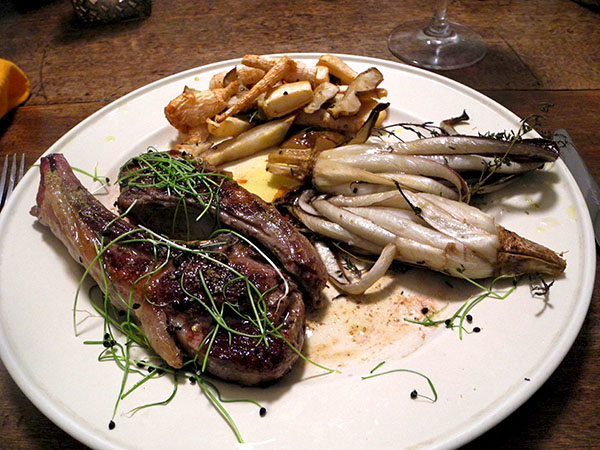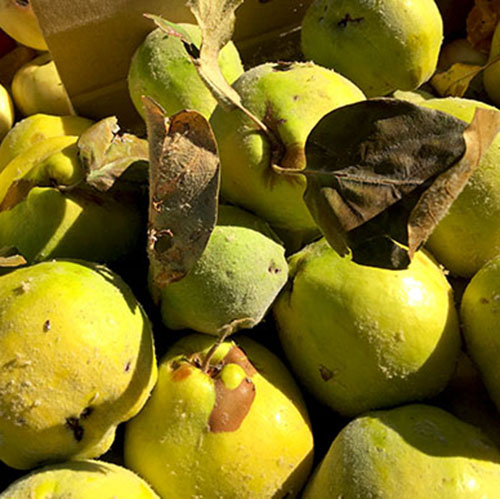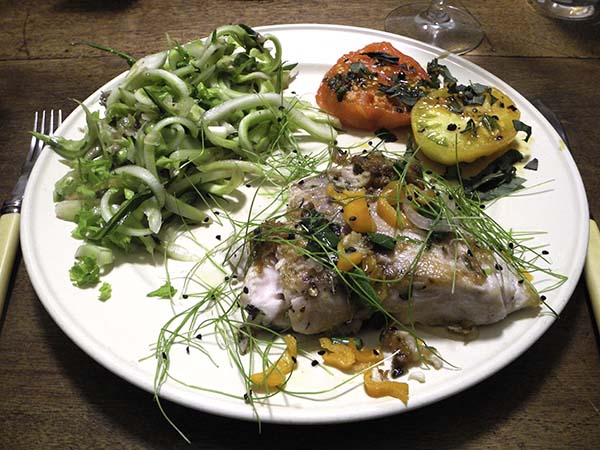
Paul wanted me to go home with the sea robin, which was actually less than half the price of the dolphin he was selling.
Speaking as my fishmonger, he said that by cooking and then writing about it on this food blog I might be able to expand the market for a very under-appreciated fish, reminding me that it was extremely sustainable (almost certainly related to its unpopularity), and pointing out that while we stood there in the Greenmarket that afternoon, all over the world there were enormous demonstrations about climate change, protests which were not unrelated to the disappearance of species.
I totally respect a fish monger who thinks in terms that not only do not favor his own business but manage to shame his customers, and I’ve prepared more than my share of sea robin (a great tasting fish, by the way), but on Friday I went with the dolphin, promising Paul it would be different next time.
Just then, a guy came up to the stand asked him about a fish he didn’t have that day, and the 3-way, eventually 4-way, conversation moved on to our experiences catching sea robin with hook and line (always inadvertently), and lots of laughter, especially over the surprise of their creepy ‘legs’ and ‘wings’.
I love the Greenmarket.
- a one pound skinned fillet of local dolphin, or ‘dolphinfish’, from Pura Vida Seafood, a species elsewhere known as orata, or dorade, but in the US commonly referred to by a Hawaiian name, ‘Mahi-Mahi’, (which I try to resist), because Americans, seduced by popular media, would otherwise think of Flipper, halved at home, dry-marinated for 30 minutes or so with more than half a tablespoon of zest from an organic California lemon from Whole Foods Market, half a tablespoon of what I think is chopped za’atar from Jayne of TransGenerational Farm (I’m ashamed to admit that I don’t now for certain that it was that herb; it may have been an oregano or marjoram, since they all look similar and I had bought all 3 herbs within days of each other; only one of them remains), sea salt, and freshly-ground black pepper, seared in a little olive oil inside a heavy copper skillet for about 2 minutes, the former skin side up, then turned over, the second side seared for another 2 minutes, the heat lowered and the pan loosely covered with a tin-lined copper universal lid for a minute or two, after which some short slices of baby French leek from Mountain Sweet Berry Farm and a bit of chopped fresh habanada pepper from Campo Rosso Farm were introduced and very briefly sautéed with the fish before the leek, the habanada, and the fish were arranged on the plates, and the now rich, savory pan juices poured on top, some micro scallion from Two Guys from Woodbridge scattered over all
- two heirloom tomatoes from Norwich Meadows Farm, sliced horizontally, the cut sides seasoned with salt and pepper and sprinkled with torn leaves of spearmint, the gift of a friend
- some of the puntarelle prepared for a meal 2 days earlier but then set aside because including it would have made the portions too large, tossed now with a freshly assembled anchovy sauce
- the wine was a California (Sonoma) white, Scott Peterson ROX Sonoma Coast Chardonnay 2018, from Naked Wines
- the music was an album of various ‘Concerti Grossi’ by Francesco Geminiani’s, ‘Quinta Essentia’, performed by Concerto Köln
